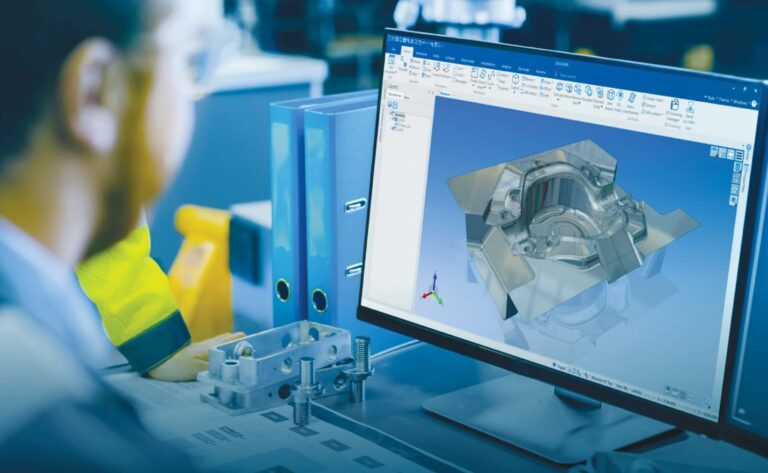Deduction management is a cornerstone of efficient financial operations, particularly within accounts receivable processes. By managing customer deductions effectively, businesses can safeguard their revenue, improve cash flow, and cultivate stronger relationships with clients. This comprehensive guide explores the nuances of deduction management, from understanding its core principles to implementing best practices.
Understanding Deductions
A deduction occurs when a customer pays less than the invoiced amount, often citing reasons such as shortages, damaged goods, pricing errors, or promotional allowances. While some deductions are valid, many can result from errors, miscommunication, or fraudulent claims.
For businesses, deductions represent a potential loss in revenue and a challenge to cash flow management. They also create administrative burdens as they require time and resources to investigate and resolve. To navigate this effectively, companies need a structured approach to identify, resolve, and prevent deductions.
Key Components of Deduction Management

Effective deduction management requires addressing three primary aspects: identification, resolution, and prevention.
1. Identification
The ability to identify deductions promptly is the foundation of effective management. This step involves recognizing discrepancies as soon as they occur. For example, if a payment from a customer does not match the invoice amount, it should trigger a notification or alert in the system.
Manual identification can be cumbersome, especially for companies handling a high volume of transactions. This is where automation becomes invaluable. Automated systems can scan through large datasets, flag inconsistencies, and categorize deductions based on their nature.
2. Resolution
cem requires a clear understanding of their root cause. Common reasons for deductions include:
- Shortages: Customers claim they did not receive the full quantity of goods ordered.
- Damages: Goods were received in a damaged condition.
- Pricing Errors: Discrepancies between agreed pricing and the invoice amount.
- Promotional Allowances: Pre-negotiated deductions for marketing or promotional activities.
The resolution process typically involves communication with the customer, gathering evidence, and taking corrective action. For example, if a deduction results from a pricing discrepancy, businesses should verify the contractual agreement, adjust the invoice, and issue a corrected statement.
3. Prevention
The ultimate goal of deduction management is to minimize their occurrence. Prevention strategies include:
- Contractual Clarity: Clearly defining terms and conditions in contracts to avoid misunderstandings.
- Improved Communication: Regularly updating customers about changes in pricing, policies, or delivery schedules.
- Enhanced Internal Controls: Ensuring robust systems are in place for billing, shipping, and customer service to reduce errors.
- Routine Audits: Regularly reviewing processes and transactions to identify potential risks and rectify them proactively.
The Importance of Deduction Management

Deduction management is more than just a back-office process; it directly impacts a company’s financial health and operational efficiency. Below are key reasons why deduction management should be a priority for every organization:
1. Improved Cash Flow
Deductions can tie up significant amounts of money, reducing cash availability for operational needs. By managing deductions effectively, companies can recover funds faster and maintain healthier cash flow.
2. Reduced Days Sales Outstanding (DSO)
DSO is a critical metric that measures the average time taken to collect payment after a sale. Deductions contribute to delays in payment collection, inflating DSO. Addressing deductions promptly can reduce this metric, improving overall efficiency.
3. Enhanced Customer Relationships
Transparent and proactive communication during the deduction resolution process builds trust with customers. By addressing their concerns promptly and fairly, businesses can strengthen their relationships and encourage repeat business.
4. Cost Savings
Efficient deduction management reduces the administrative burden associated with investigating and resolving disputes. Automation and streamlined processes minimize manual intervention, saving time and resources.
Challenges in Deduction Management

Despite its importance, deduction management is fraught with challenges, particularly for businesses dealing with high transaction volumes. Common obstacles include:
- Complexity of Deductions: With various reasons for deductions, identifying the root cause can be time-consuming.
- Volume of Data: Large enterprises often deal with thousands of invoices, making manual identification and resolution impractical.
- Lack of Automation: Many companies still rely on outdated systems, leading to inefficiencies and errors.
- Customer Disputes: Resolving deductions often involves negotiating with customers, which can be contentious and time-consuming.
To overcome these challenges, businesses must adopt modern tools and strategies that streamline the deduction management process.
Best Practices in Deduction Management
Implementing best practices can significantly improve the efficiency and effectiveness of deduction management.
1. Leverage Automation
Automation is a game-changer in deduction management. Advanced software solutions can:
- Automatically flag discrepancies in payments.
- Categorize deductions based on predefined criteria.
- Provide real-time insights into deduction trends.
By reducing manual intervention, automation enables faster resolution and minimizes the risk of errors.
2. Foster Strong Customer Communication
Open and transparent communication with customers is essential. Establishing a clear process for handling disputes ensures that customers feel heard and valued. Providing regular updates during the resolution process also builds trust.
3. Invest in Staff Training
Deduction management requires specialized skills, including attention to detail, analytical thinking, and effective communication. Regular training programs can equip staff with the knowledge and tools they need to manage deductions efficiently.
4. Conduct Data Analysis
Analyzing deduction data can reveal patterns and trends, helping businesses identify recurring issues. For example, frequent pricing discrepancies may indicate the need for better contract management or pricing systems.
5. Establish Clear Policies
Defining clear policies for deductions, including timelines for resolution and acceptable reasons for deductions, sets expectations for both customers and employees.
The Role of Technology in Deduction Management

Technology plays a pivotal role in modern deduction management. Some key technological tools include:
- Enterprise Resource Planning (ERP) Systems: ERP systems integrate various business processes, providing a centralized platform for managing deductions.
- Customer Relationship Management (CRM) Software: CRM tools help track customer interactions, ensuring that communication about deductions is documented and streamlined.
- Data Analytics Tools: Analytics platforms provide insights into deduction trends, helping businesses identify areas for improvement.
Adopting these tools not only improves efficiency but also provides a competitive edge
Case Study: Successful Deduction Management
Consider a retail company that struggled with high deduction volumes due to frequent pricing discrepancies. By implementing an automated deduction management system, the company achieved:
- 40% Reduction in Resolution Time: Automation reduced the time needed to identify and resolve deductions.
- Improved Customer Satisfaction: Clear communication during the resolution process strengthened customer relationships.
- Significant Cost Savings: Lower administrative costs and fewer disputes saved the company thousands annually.
This example highlights the tangible benefits of a proactive approach to deduction management.
Conclusion
Deduction management is a vital process that demands attention, precision, and strategy. By focusing on identification, resolution, and prevention, businesses can reduce revenue loss, improve cash flow, and enhance customer relationships.
Investing in automation, fostering communication, and analyzing data are key steps toward effective deduction management. Ultimately, a proactive approach not only minimizes deductions but also positions businesses for long-term financial health and success.
Related Posts:
- Winning at Kalyan Final - Strategies for Guaranteed Success
- AI and Business Growth ─ How Intelligent Marketing…
- Testing on Safari for Windows ─ Effective Strategies…
- Digital Transformation Strategies for Small…
- Innovative Approaches to Android Automation ─ Tools…
- What Happens When Winning Feels Like Losing? The…







